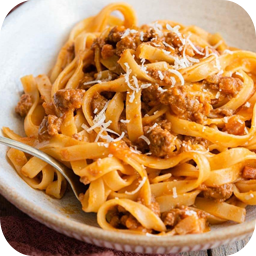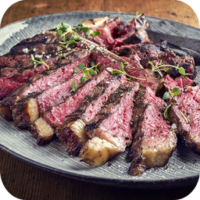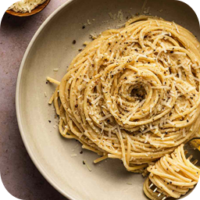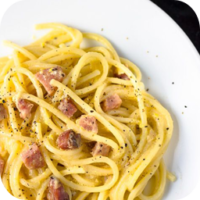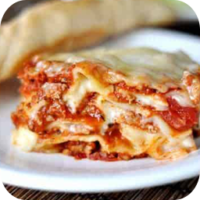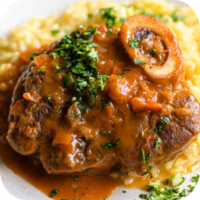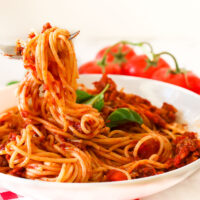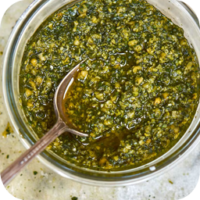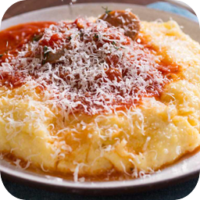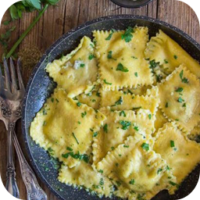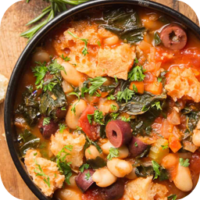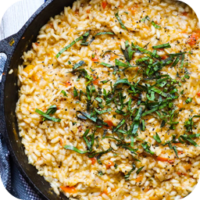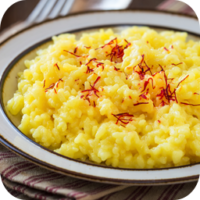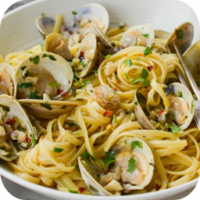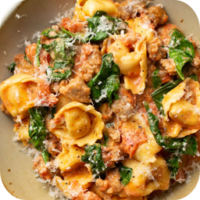Bolognese Sauce (known in Italy as Ragù alla Bolognese) is a rich, hearty, and flavorful meat-based sauce originating from Bologna, Italy. It is traditionally served with pasta, most famously tagliatelle, and is a cornerstone of Italian cuisine. The sauce is made with a combination of meat, vegetables, wine, and stock, slowly cooked to develop a deep, savory flavor.
Key Features of Bolognese Sauce:
- Main Ingredients:
- Meat: The primary ingredients are ground beef and/or pork, though veal can sometimes be used. The meat is typically browned and then simmered for hours to create a rich and tender texture.
- Vegetables: The classic base of Bolognese includes finely chopped onion, carrot, and celery, often referred to as a “soffritto” in Italian cooking. These vegetables provide a sweet, aromatic base for the sauce.
- Tomato Paste or Tomatoes: While Bolognese is a meat-based sauce, a small amount of tomato paste or crushed tomatoes is added for color and a subtle acidity.
- Wine: Red or white wine is added to deglaze the pan, providing additional depth of flavor.
- Milk or Cream: A traditional element of Bolognese sauce is the addition of milk or cream, which helps balance the acidity of the tomatoes and results in a smooth, velvety texture.
- Broth: Beef or vegetable broth is often used to simmer the sauce, making it more liquid and allowing the flavors to meld over time.
- Herbs and Seasoning: Common seasonings include bay leaves, garlic, and nutmeg. Some versions may include parmesan cheese to finish the dish.
- Flavor Profile:
- The flavor of Bolognese is rich and savory, with a deep umami from the slow-cooked meat and the added complexity from the wine, milk, and herbs. The sweetness of the soffritto balances the savory and slightly tangy taste from the tomato paste.
- Cooking Method:
- Slow Cooking: The key to a good Bolognese is its slow cooking process. The sauce is typically simmered for at least 1-2 hours, allowing the flavors to develop and the meat to become tender and well-infused with the sauce.
- Building Layers of Flavor: The vegetables are first sautéed in olive oil or butter, followed by browning the meat. After deglazing with wine and adding the tomatoes and broth, the sauce is allowed to cook low and slow, often for several hours.
- Serving:
- Pasta: While Bolognese is most commonly served with tagliatelle (a wide, flat pasta), it can also be paired with other pasta types like pappardelle, fettuccine, or rigatoni. The sauce clings beautifully to pasta, creating a satisfying dish.
- Lasagna: Bolognese sauce is a key component of Lasagna alla Bolognese, where it’s layered between sheets of pasta with béchamel sauce and cheese.
- Toppings: It is often finished with a sprinkle of parmesan or grana padano cheese.
Traditional Bolognese Recipe:
Ingredients:
- 1 lb (450g) ground beef (or a mix of beef and pork)
- 1 onion, finely chopped
- 1 carrot, finely chopped
- 1 stalk celery, finely chopped
- 2 tablespoons olive oil or butter
- 1/2 cup red or white wine
- 1 cup whole milk or heavy cream
- 1 can (14 oz) crushed tomatoes or 2 tablespoons tomato paste
- 1-2 cups beef broth
- 2 bay leaves
- 1/2 teaspoon nutmeg
- Salt and pepper to taste
- Freshly grated parmesan cheese (for serving)
- Fresh pasta, such as tagliatelle
Instructions:
- Prepare the Soffritto: Heat olive oil or butter in a large pan over medium heat. Add the chopped onion, carrot, and celery. Cook until softened and fragrant, about 8-10 minutes.
- Brown the Meat: Add the ground meat to the pan and brown it, breaking it up with a spoon. Cook until the meat is no longer pink and is fully browned.
- Deglaze with Wine: Pour in the wine and cook, stirring, until the liquid has mostly evaporated.
- Add Tomatoes and Broth: Stir in the tomato paste (or crushed tomatoes) and beef broth. Add bay leaves and a pinch of nutmeg.
- Simmer the Sauce: Reduce the heat to low and let the sauce simmer uncovered for at least 1-2 hours, stirring occasionally. Add milk or cream halfway through the cooking time and stir it in to create a creamy, rich texture.
- Finish and Serve: Once the sauce has thickened and the flavors have melded, taste and adjust seasoning with salt and pepper. Serve the Bolognese sauce over freshly cooked pasta, garnished with grated Parmesan cheese.
Variations of Bolognese Sauce:
- Ragù alla Napoletana: A variation from Naples, this sauce often includes more tomato and is sometimes cooked with a pig’s foot or other additional meats.
- Vegetarian Bolognese: Some variations use lentils, mushrooms, or plant-based meat as a substitute for animal proteins, offering a vegetarian-friendly alternative.
Serving Suggestions:
- Bolognese Sauce pairs well with a glass of Italian red wine, such as Chianti or Barbera.
- It can be served as a main course with fresh crusty bread to soak up the sauce.

